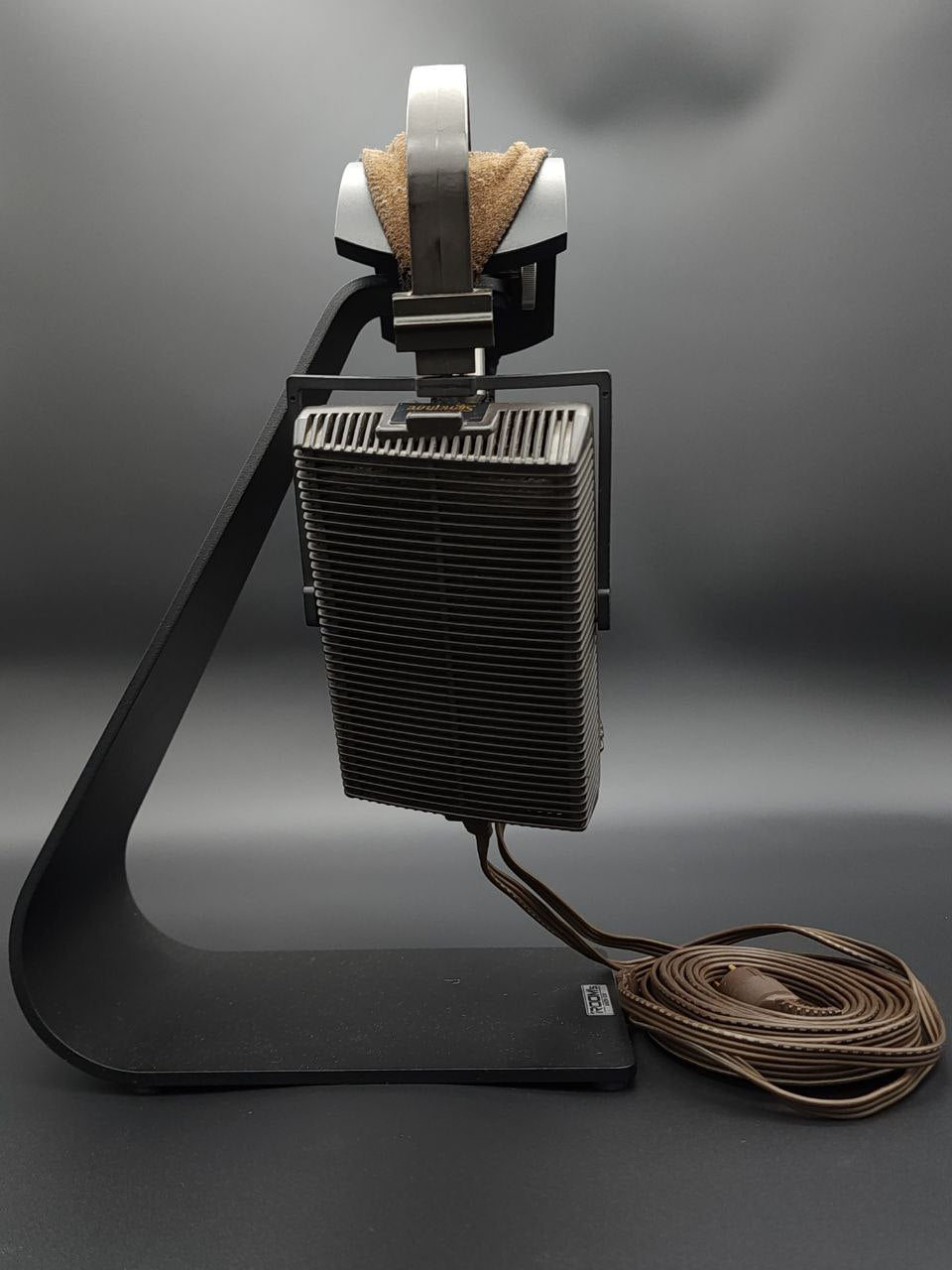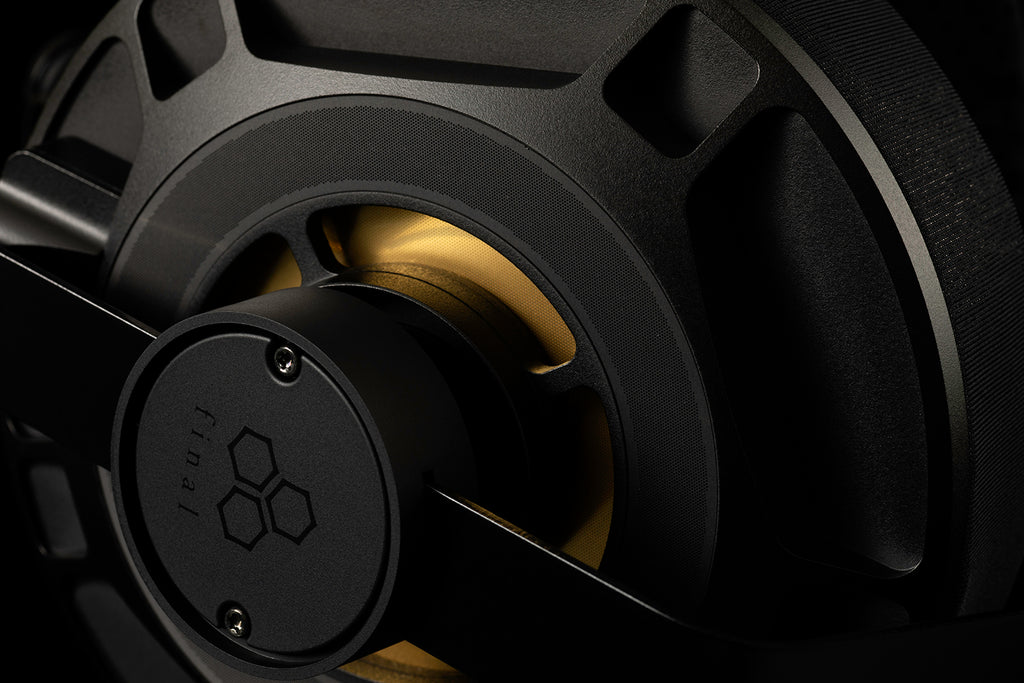For anyone even mildly familiar with electrostatic headphones, there’s a good chance they know STAX. It’s hard to look at electrostatic headphones without coming across their name. Despite the weight behind their name, STAX has always held a sort of controversial position in high-end audio. Their true followers have lauded that no other dynamic headphones can keep up. While many others have detracted due to their original plastic builds and “plastic-sounding” timbre. Despite the controversy STAX has made constant progress in the electrostatic world since its founding.
STAX was founded in 1938 and came out with their first “earspeaker” in 1960, which was the SR-1. Many other iterations of this headphone design came out in the years to come as well as integrated amplifiers and transformer adapters. This leads their story to 1987 with the addition of the SR-Lambda Signature Series. The Signature Series included the SR-Λ Pro and SR-Λ Signature. The Signature series SR-Λ uses a transducing diaphragm made of high-polymer that is only "one" micron thick. The cable is made of PC-OCC that is specialy cast from pure copper. Another addition of the SR-Λ Signature was the ability to operate at 580 V D.C.
In today’s market, these “Vintage” headphones come in around $300-$400 depending on condition. Which due to their plastic build parts and relative sensitivity of electrostatic headphones can be a bit of a toss-up. This pair was loaned to me by a friend who has an eclectic taste for discontinued headphones. Intrigued by the mystery surrounding the SR-Λ Signature series and finding out whether a 30-year headphone could hold up to modern standards I jumped at the opportunity.
At the start of my audition, I subjected the SR-Λ Signature to its own music. The music I felt people would have listened to these originally with. As an avid fan of Japanese jazz and hard rock from the 70’s I began there.
Listening to Satori by Flower Travellin’ Band on the Lambda signature and it truly shines as the masterpiece it is. Hideki Ishima’s riffs are startling and distinct. Joe’s wailing is haunting and lingers just the way he intended. The timbre is really good for headphones in their price range. I still think it leaves a bit to be desired. The speed and detail are where I think these headphones really shine. No detail is left unrepresented. Which truly is fantastic considering their age, but I think some of that is an electrostatic specialty.
Getting “Back to Rhythm” by Akira Ishikawa, I was rewarded with a very detailed and lively performance. Ishikawa’s drumming is lightning fast and the funky synth through the first track is distinct. The Signature seem to have a very accurate stage where the instruments are laid out in a believable way. Its wide but not exaggerated and with very good layering. The signature really seems to nail this whole album start to finish. The combination of flat and detailed bass as well as wonderful resolution and staging are perfect for me.
Moving on to some more modern offerings, I started with “Working for the Knife” by Mitski who has put out some pretty incredible albums. While the low end is nicely textured and punchy, it is missing some of the weight that really makes this song shine. The midrange is quite nice. Her voice comes through very laid back which actually seems to fit perfectly with the song. Once again, the spatial presentation is great. The kind of non-instrument sounds at the beginning are easy to pinpoint with great accuracy. One of the things she does well on this album is a sense of space. The music seems to almost swirl around while you’re brought back to reality by a banging in the distance. The signature handles it well.
Overall, this over 30-year-old headphone holds its own and is a very enjoyable listen. The bass is linear and has great texture and punch but is missing a touch of weight. The midrange is very relaxed. The treble is airy and can lead to the headphones being a touch bright. Above all else these bring absolutely top tier detail to the table. There are very few things I’ve heard that have more detail. I think with this superior resolving power, it gives a sense of the size of the recording and pinpoint accuracy as to where the sound is coming from. With all this detail you can pick up more reverb and ambient cues which really make the recording come to life. I absolutely recommend these if you can find a pair or pick up a pair in Stax’s new line of lambda.




Leave a comment
All comments are moderated before being published.
This site is protected by hCaptcha and the hCaptcha Privacy Policy and Terms of Service apply.